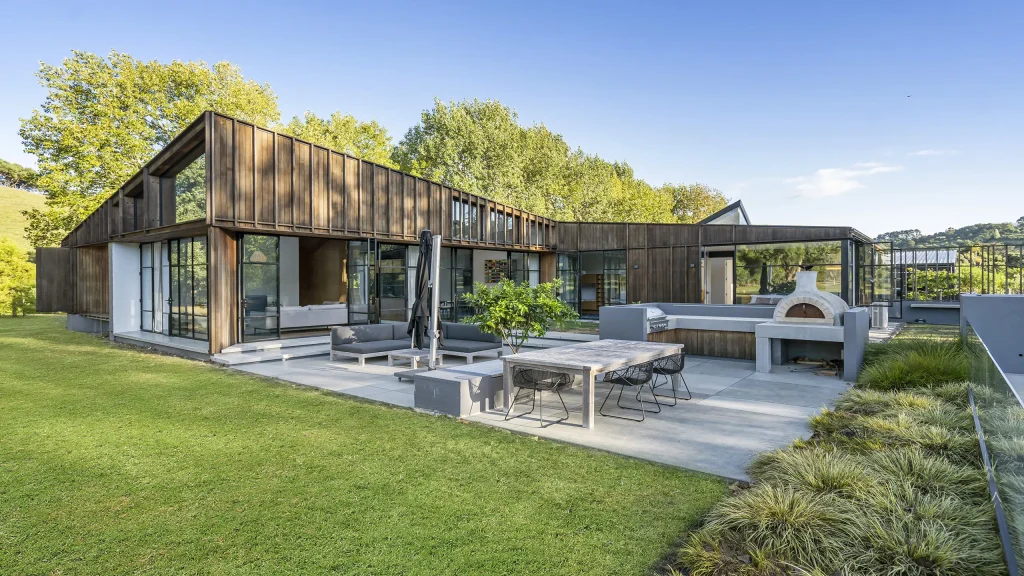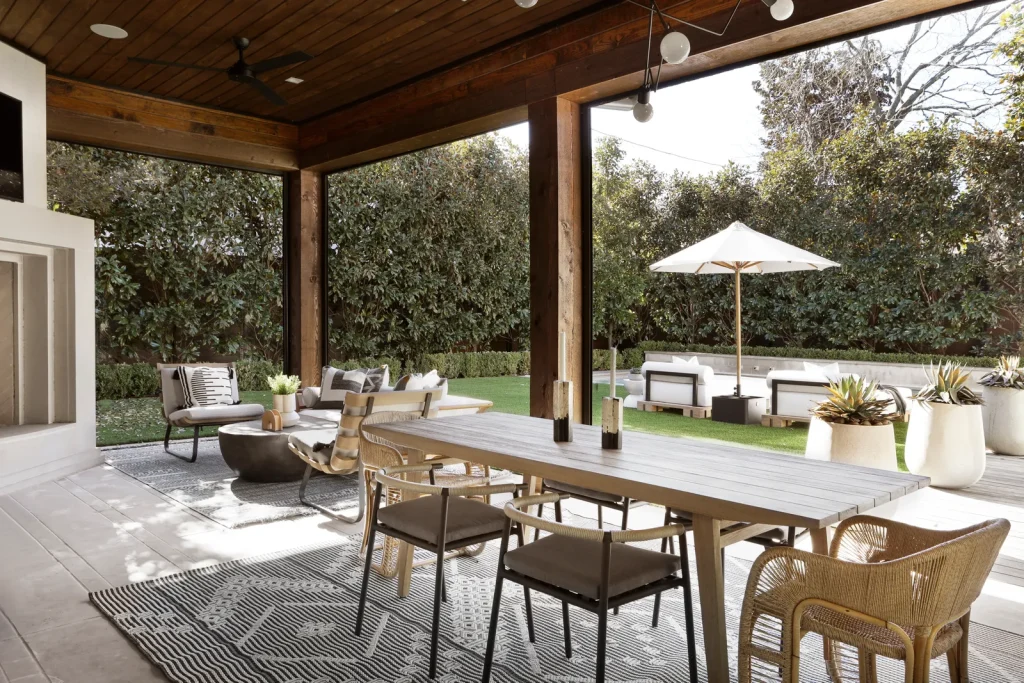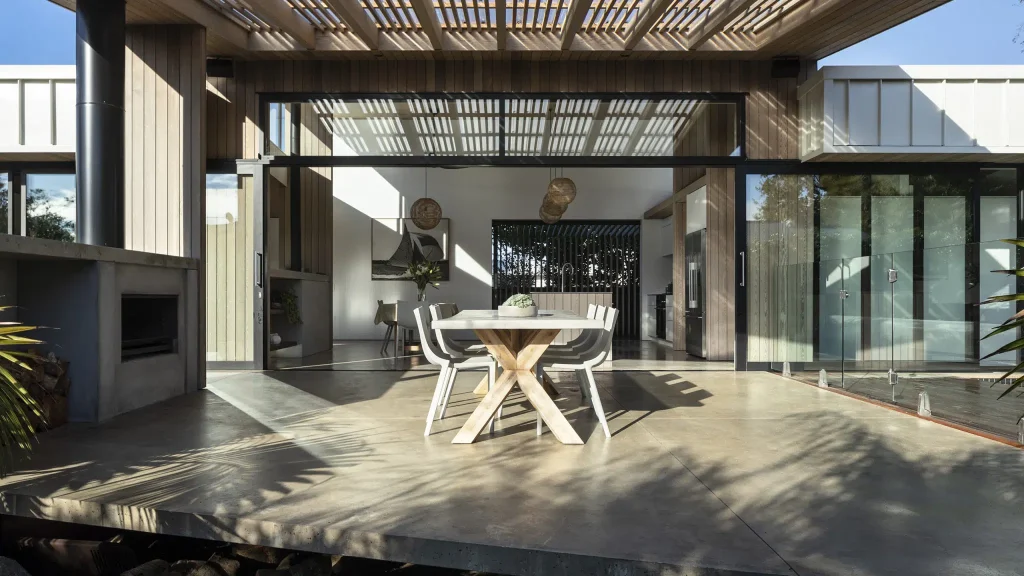
Concrete patios are a popular choice for homeowners in Geelong due to their durability, versatility, and cost effectiveness.
As an experienced concrete contractor with years of expertise in residential and commercial concreting, I will delve into the advantages and disadvantages of concrete patios, ensuring you have all the information needed to make an informed decision.
Table of Contents
- Benefits of Concrete Patios
- Drawbacks of Concrete Patios
- Tips for Maintaining Your Concrete Patio

Concrete patios are a durable and versatile option for outdoor spaces, offering a range of design possibilities and long lasting performance. Understanding the pros and cons of concrete patios will help you determine if this is the right choice for your property.
1. Benefits of Concrete Patios
a. Durability and Longevity: Concrete patios are renowned for their robustness and ability to withstand heavy use and harsh weather conditions. Unlike wood, concrete does not rot, warp, or succumb to termites, making it a reliable long-term investment.
b. Versatility in Design: Concrete can be customised in numerous ways. From various colours and textures to stamped designs that mimic stone, brick, or wood, the possibilities are virtually endless. This versatility allows you to create a patio that complements your home’s aesthetic.
c. Cost-Effectiveness: Compared to other patio materials like natural stone or pavers, concrete is relatively affordable. Its low maintenance requirements further enhance its cost-effectiveness over time.
d. Quick Installation: Concrete patios can be installed relatively quickly, minimising disruption to your daily routine. This is especially beneficial for commercial properties that cannot afford prolonged construction periods.
2. Drawbacks of Concrete Patios
a. Potential for Cracking: One of the primary concerns with concrete patios is the potential for cracking, especially in areas with extreme temperature fluctuations. Proper installation and expansion joints can mitigate this risk, but it’s something to consider.
b. Slippery When Wet: Concrete surfaces can become slippery when wet, posing a safety hazard. Applying a non-slip coating or choosing a textured finish can help prevent accidents.
c. High Repair Costs: While concrete is durable, repairing it can be costly and challenging. Matching the exact colour and texture of the original concrete can be difficult, making repairs noticeable.
3. Tips for Maintaining Your Concrete Patio
a. Regular Cleaning: Keep your concrete patio clean by regularly sweeping
away debris and hosing it down with water. For tougher stains, use a mild detergent and a brush.
b. Sealing: Applying a concrete sealer can protect your patio from stains, weather damage, and general wear and tear. Reapply the sealer every 2-3 years for optimal protection.
c. Addressing Cracks Promptly: If you notice any cracks, address them promptly to prevent them from spreading. Use a concrete patching compound to fill small cracks and consider professional help for larger issues.

Why Choose Us
- Expertise and Experience: With years of experience in both residential and commercial concreting, we guarantee top quality service and quality workmanship.
- Custom Designs: We offer a wide range of design options to ensure your patio is unique and tailored to your preferences.
- Competitive Pricing: Our services are competitively priced, providing excellent value for your investment.
- Quick and Efficient Installation: We work efficiently to minimise disruption and complete your project promptly.
- Customer Satisfaction: Our commitment to customer satisfaction is reflected in our numerous positive reviews and repeat clients.
Contact us today to learn more about our services or to request a free quote. We look forward to helping you create the perfect concrete patio for your home or business.
FAQs
The average lifespan of a concrete patio is typically between 25 and 30 years, but with proper maintenance, it can last even longer. The longevity of your patio depends on factors such as climate, the quality of materials used, and how well it was installed. Harsh weather conditions, frequent freeze-thaw cycles, and heavy loads can cause wear and tear over time. Regular cleaning, sealing, and prompt repairs can help preserve the integrity of the concrete and extend its lifespan. Investing in a high-quality installation from the start can also make a big difference in how long your patio remains in excellent condition.
To keep your concrete patio in the best possible shape, it should be sealed every two to three years, though this can vary based on usage and exposure to the elements. Sealing protects the surface from moisture penetration, stains, UV damage, and general wear and tear, all of which can lead to deterioration over time. If your patio is frequently exposed to heavy rain, extreme heat, or heavy foot traffic, sealing more often may be necessary. A high-quality sealant will enhance the appearance of the concrete, making colours look richer and the surface more resistant to cracks and fading. Regular sealing is an easy and cost-effective way to maintain the longevity and aesthetics of your patio.
Yes, it is possible to install a concrete patio yourself, but it requires careful planning, the right tools, and a good understanding of concrete work. Pouring and finishing concrete is a complex process that involves site preparation, proper mixing, and ensuring even curing to prevent cracking. Mistakes such as an uneven base, improper drainage, or not allowing for expansion joints can lead to costly repairs down the track. While a DIY installation can be rewarding and cost-effective if done correctly, hiring a professional ensures a high-quality, durable finish that will stand the test of time. If you’re new to working with concrete, consider seeking expert advice or starting with a smaller project before committing to a full patio installation.
Preventing cracks in your concrete patio starts with proper site preparation, which includes ensuring the ground is well-compacted and has adequate drainage. Control joints should be strategically placed to allow for natural expansion and contraction, reducing the likelihood of random cracking. Sealing the surface protects against moisture infiltration, which can weaken the concrete over time, particularly in areas that experience frequent freeze-thaw cycles. Additionally, avoiding placing excessively heavy objects in concentrated areas and keeping the patio clear of large tree roots can help prevent structural damage. Regular maintenance, such as promptly repairing small cracks before they spread, will also keep your patio looking great for years to come.
There are plenty of design options available for concrete patios, allowing homeowners to create a unique outdoor space that complements their home’s style. Stamped concrete is a popular choice, as it can mimic the look of natural stone, brick, slate, or even wood while providing the durability of concrete. Exposed aggregate finishes add texture and visual interest, while coloured concrete allows for a customised appearance that blends seamlessly with landscaping elements. Polished or stained concrete offers a sleek, modern aesthetic, making it a great choice for contemporary outdoor areas. With so many finishes, colours, and textures to choose from, a concrete patio can be tailored to suit any design preference, from rustic to modern and everything in between.
Concrete patios can be an environmentally friendly choice, especially when designed with sustainability in mind. Using recycled concrete or incorporating fly ash and slag in the mix reduces the demand for new raw materials and lowers the carbon footprint of production. Permeable concrete options allow rainwater to filter through, reducing runoff and helping replenish groundwater supplies. Additionally, concrete patios require minimal long-term maintenance and last for decades, which means fewer resources are needed for repairs or replacements compared to other materials. By choosing eco-conscious installation methods and materials, you can enjoy a durable, stylish patio while minimising your environmental impact.

